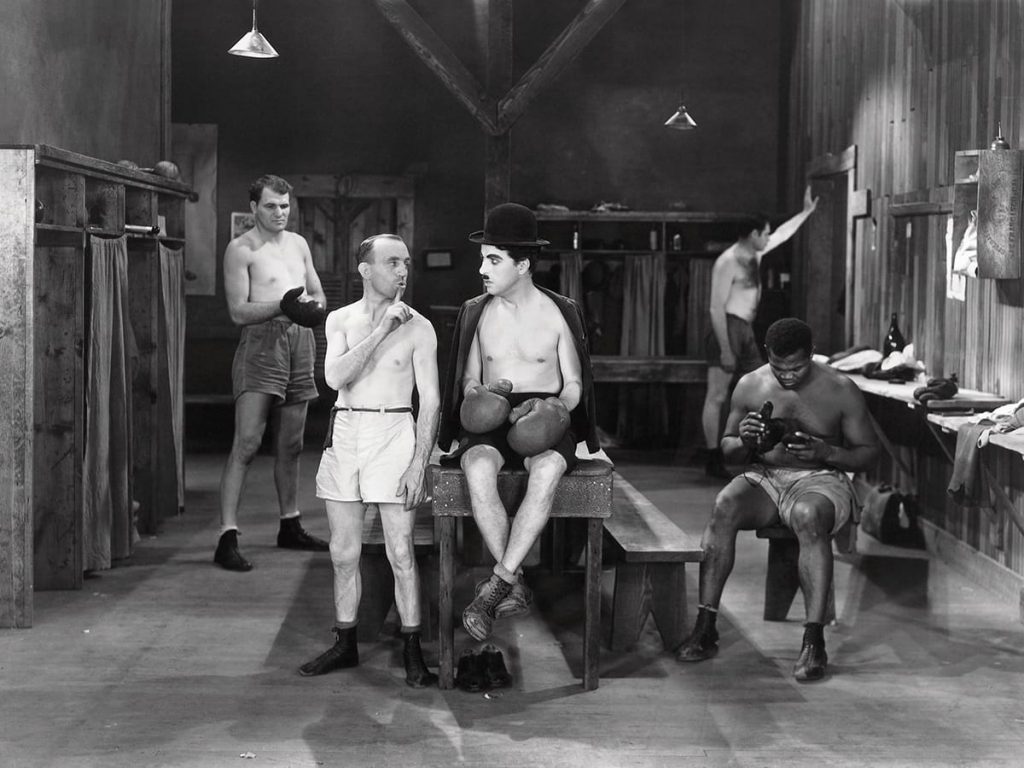
Vol. 5, No. 3
The pages of the sacramental register at St. Mary’s Assumption Church in Albion contain an entry for the marriage of Antoni Stabenau of Buffalo to Marianna Gminska of Albion. The couple was married by Ks. Piotr Basinski on January 24, 1899 and removed to Buffalo soon after. Marianna’s father, Simon Gminski, remained in Albion where he worked as a quarry laborer until his death in 1920.
On July 23, 1901, Marianna gave birth to her first son, Anthony, in Buffalo. The young Stabenau’s early life remains somewhat of a mystery until May 14, 1923, when he made his debut as a boxer. That evening, Stabenau started his amateur heavyweight career facing Dixie Kid at the Broadway Auditorium in Buffalo. Although his first match ended in a draw, he went on to win eight straight fights; some newspaper articles claimed his win-streak extended to 17 with 15 knockouts.
His first major fight came on January 7, 1924 against the Senegalese-born Amadou M’Barick Fall, known professionally as Battling Siki. Stabenau later recalled that he was “scared silly,” telling the Buffalo Courier-Express that “I was only 21 years old with a string of knockouts. There had been so much in the papers about this wild Senegelease [sic]…that when I climbed into the ring my knees were knocking so loud I could hear them…Because I was so tense, the rabbit punches he clubbed me with on the back of the neck paralyzed me, and I was stiffened.”
“Three-Ton Tony,” as he was known in these parts, experienced his most notable fight on March 2, 1925, at Elmwood Music Hall in Buffalo against Homer Smith, a nationally ranked heavyweight fighter. In a later interview with the Buffalo Courier-Express, Stabenau recalled this hard-fought battle. The reporter wrote, “Smith belabored Stabenau soundly in the early rounds, and it appeared as though the local lad wouldn’t last, as he made several trips to the canvas.” As Smith prepared to finish the fight, “Tony lashed out with a wild right, and it connected with Smith’s chin. Down he went!” Stabenau claimed he won the fight, but it appears as though he took a whooping at the hands of Smith, who took the fight by a slim margin.
Although Stabenau’s boxing career is rather interesting, it was his professional pursuits after leaving Buffalo that raises eyebrows. Based on his fighting record, he appears to have left Western New York sometime in 1928, boxing in Chicago, San Diego, and San Francisco, before facing several fighters at Legion Stadium in Hollywood. Stabenau was living with his family, including his mother, in Los Angeles, California; he listed his occupation as a boxer in motion pictures and prize fights.
In 1930, Tony was asked by Georges Carpentier to take a role in the Warner Brothers film entitled “Hold Everything,” an early motion picture shot in Technicolor. That same year, he played a boxer in the black and white silent film entitled “The Big Fight.” It was the following year that he would play his most notable, yet uncredited role in motion pictures.
Released in 1931, Stabenau played the role of a victorious boxer in Charlie Chaplin’s film “City Lights.” The rather unique film was shot as a silent production despite the availability of sound recordings and is regarded as one of Chaplin’s best films. This photograph shows Stabenau standing in the background lacing up his gloves while Chaplin sits on a table, front and center.
After his short stint as an actor, Stabenau became a detective with the Los Angeles Sheriff’s Department, visiting Western New York regularly. Buffalo writer Frank Wakefield interviewed Stabenau in 1956, writing “A ponderous 6-foot-3-inch man in horn-rim glasses who resembled an elderly heavyweight wrestler, laboriously plodded up the four flights of stairs leading to Jack Singer’s gymnasium,” where Stabenau trained as a young fighter. An athlete later asked him to jump in the ring to work out, to which Stabenau responded “Are you kidding? I weighed 190 in my prime. Now I’m around 260…I’m eligible for a retirement pension now and I want to enjoy it.”
Stabenau died February 14, 1983, and was buried in San Jacinto, California.

